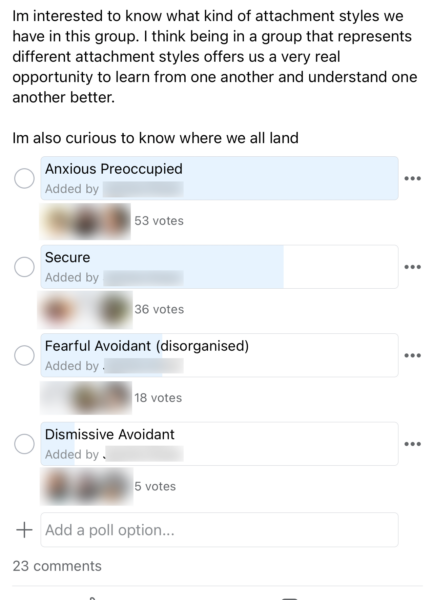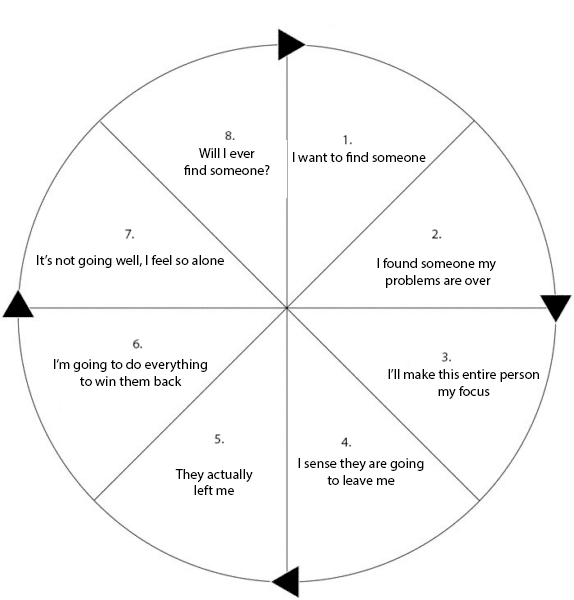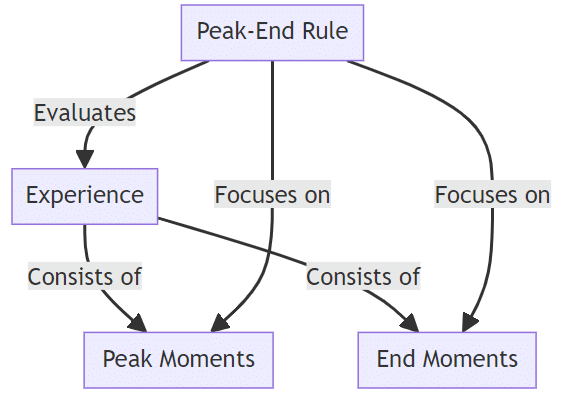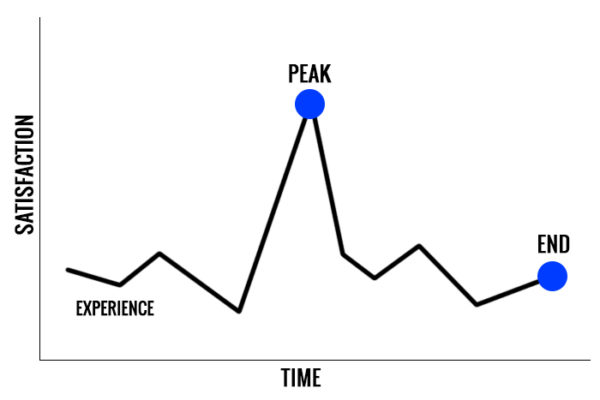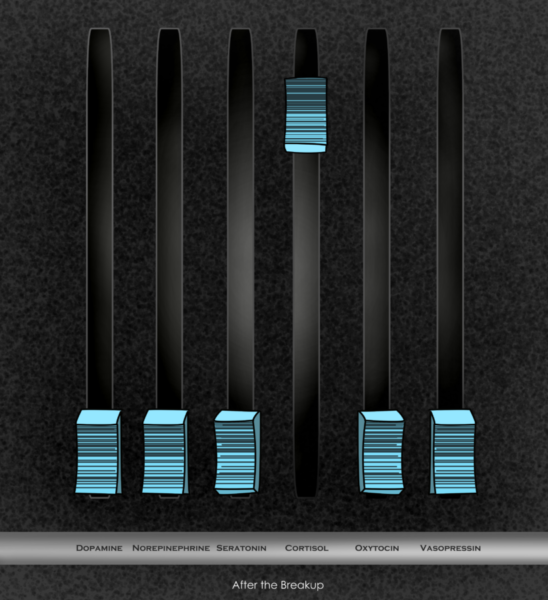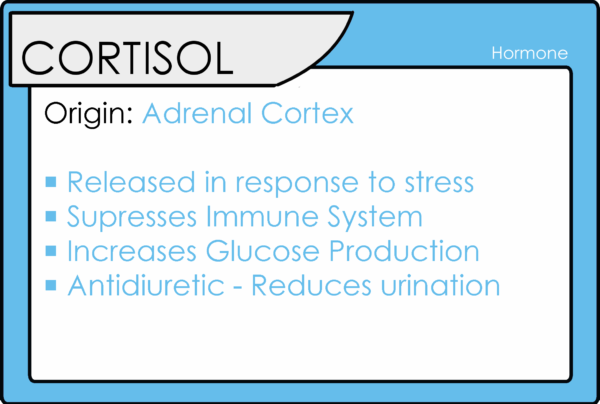Whoever said that breakups were supposed to be easy is out of touch with reality.
Over the history of this website we have literally had millions of individuals come and interact with our content. Out of those millions of individuals over 120,000 have found the courage to leave a comment,
I would say the majority of those commentors haven’t accepted their breakup or the fact that their ex is gone. No, most literally want to do everything they can to win their exes back. (And no, for those of you reading and being on the verge of a panic attack this doesn’t mean your ex is gone forever.)
Today I’m more interested in the “why” of it all.
For my money it comes down to five core reasons,
- You being caught in an anxious death loop
- The peak-end rule
- Your cortisol being in this constant state of trigger
- The 8 stages of breakup grief
- The fact that getting over an ex is like trying to quit drugs
Let me explain!

What Are Your Chances of Getting Your Ex Boyfriend Back?
Take the quizFactor #1: You Are Caught In An Anxious Death Loop
Based on the internal polling we’ve conducted, we’ve discovered that our average client, meaning the typical person reading this article, exhibits what we categorize as an anxious attachment style.
In essence, this means their entire existence often revolves around their ex or the idea of reconciling after a breakup. This tendency is largely attributed to their predisposition towards codependent relationships.
I always aim to simplify attachment styles for my clients by focusing on their core wounds. Every insecure attachment style, such as the anxious type, stems from a foundational wound that triggers the associated behavior.
For those with an anxious attachment, the core wound is a profound fear of abandonment. In the context of breakups, their deepest fear has materialized. This perceived abandonment often catalyzes anxious behaviors: begging, pleading, incessantly seeking reassurance, and hastily attempting to mend issues that perhaps shouldn’t be addressed immediately.
Interestingly, those with an anxious attachment style frequently find themselves paired with individuals exhibiting an avoidant attachment style. This pairing is akin to mixing oil with water. Each time the anxious individual becomes triggered and attempts reconciliation, it only serves to distance the avoidant partner further.
However, another intriguing phenomenon often obstructs anxious individuals from moving past their breakup: what I affectionately term the “anxious death loop.”
This loop is a self-perpetuating negative feedback cycle that seems nearly impossible to break free from. It comprises eight primary stages:
- The anxious individual seeks a partner.
- Upon finding someone, they convince themselves their troubles have ceased. They become deeply infatuated, committing prematurely, ushering in stage three.
- They become singularly focused on their partner.
- This intense focus repels their partner, leading them to sense an impending separation.
- Their partner indeed leaves them, marking the onset of the breakup’s emotional aftermath.
- Desperate to restore their world to its pre-breakup state, the anxious individual endeavors to win back their ex.
- Typically, these efforts falter, plunging them into feelings of desolation and loneliness.
- Consumed by these emotions, they question their perpetual misfortune in love, which circles them back to the initial stage of seeking a partner.
Tragically, those ensnared in this “anxious death loop” often oscillate between on-again, off-again relationships or hop from one relationship to the next, each ending similarly. This repetitive cycle persists primarily because individuals struggle to discern an escape route from this loop.
Factor #2: The Peak-End Rule
The peak-end rule is a cognitive bias influencing how we recall past events. Intense moments, whether positive or negative, represent the “peaks.” Meanwhile, the concluding moments of an experience, or the “end,” play a significant role in our recollection of events.
This phenomenon is evident in relationships and can contribute to the difficulty in accepting the departure of an ex. Over time, there’s a tendency to reminisce about the good times while diminishing the bad ones.
This selective memory can create an idealized perception of the relationship, making its conclusion harder to accept. Essentially, there’s a focus on the peak positive memories, overshadowing the negative ones.
Interestingly, I once asked an AI to design a graphic illustrating the peak-end rule. I was exploring the extent to which AI could benefit my business. The result was intriguing, though not entirely satisfactory.
I mean, how the hell do you make sense of that?

What Are Your Chances of Getting Your Ex Boyfriend Back?
Take the quizI then crafted a graphic myself, which, in my opinion, more effectively captures the essence of the peak-end rule.
What’s crucial to understand is that as time progresses, memories of experiences with an ex tend to gravitate towards the peak positive moments, often sidelining the peak negative ones.
Consequently, as more time elapses, a potentially toxic relationship might not be perceived as negatively as it once was, or as others saw it. Instead, it’s remembered as a positively tinted, almost romanticized experience, which might not align with reality.
This skewed perception can be a significant factor in the challenge of coming to terms with an ex’s absence.
Factor #3: Your Cortisol Is In This Constant Triggered State
I’ve been discussing this extensively lately: the neurochemical changes that occur within you following a breakup. To visualize it, imagine a sharply elevated line representing cortisol.
During a breakup, cortisol levels spike.
Commonly referred to as the “stress hormone,” cortisol plays various roles, including facilitating our fight-or-flight response, enhancing alertness, and ensuring survival. However, in today’s world, particularly after a breakup, cortisol levels can remain persistently high. This heightened state is a response to the immense emotional stress and turmoil of the breakup.
I recently encountered an enlightening article from “Mind, Body and Soul” based in Australia.
They interviewed Dr. Lee, who shared insights on cortisol. Dr. Lee posited that cortisol levels should return to normal within three to four hours after a stress-inducing event, such as an argument or high-pressure meeting. However, if these levels remain elevated for an extended duration, it might take up to six months for them to stabilize.
This observation resonates deeply.
After a breakup, the surge in cortisol often leads to obsessive thoughts about the ex-partner. Actions like incessantly checking their social media or even unintentionally bumping into them at their workplace further sustain these elevated cortisol levels.
Over time, the body might misconstrue this constant state of stress as the new norm, which it isn’t.
In essence, one of the primary neurochemical reasons making it challenging to accept the departure of an ex and move forward is the prolonged elevation of cortisol levels.
Factor #4: The 8 Stages of Heartbreak Grief
I delved into this concept in a podcast earlier this year. It’s a perspective not frequently discussed, and I believe it brings unique value to the conversation.
While many are familiar with the traditional five stages of grief – denial, anger, bargaining, depression, and acceptance – I’ve observed that these stages don’t always align with the experiences of my clients post-breakup.
Instead, I’ve identified what I term the “eight stages of heartbreak grief.”
- Desperation: This initial stage is characterized by an overwhelming desire to reconcile with the ex-partner. It’s rooted in the anxious core wound of fear of abandonment. The breakup feels like a manifestation of this abandonment, leading to a desperate need to rectify the situation.
- Pain and Guilt: Here, individuals grapple with the emotional pain of the breakup and guilt over perceived wrongdoings, even if they weren’t at fault.
- Bargaining: At this juncture, individuals believe they can salvage the relationship. They’ve researched, read books, and listened to podcasts, fueling hope that reconciliation is possible.
- Anger: This stage is self-explanatory. Initial attempts at reconciliation might falter, leading to feelings of resentment towards the ex-partner.
- Depression: Drawing parallels with the anxious death loop, individuals feel desolate and question their prospects of ever finding love again.
- Initial Acceptance: After perhaps completing one cycle of the anxious death loop, there’s a fleeting realization that moving on might be the best course of action. However, this acceptance is often temporary.
- Relapse: A setback stage where individuals revert to the belief that they can mend the relationship. This stage is evident in our community, where members oscillate between wanting to move on and desiring reconciliation.
- Actual Acceptance: The final stage, where after multiple relapses and a tumultuous journey, individuals genuinely accept the reality of the situation, whether it’s moving on or reconciling.
Factor #5: Getting Over An Ex Is Like Trying To Quit Drugs
The Observer featured an intriguing article where they interviewed Dr. Brown, a clinical professor of neurology at the Albert Einstein College of Medicine. I was initially taken aback upon learning of Dr. Brown’s affiliation with the Albert Einstein College of Medicine, unaware of its existence.
But indeed, it’s a legitimate institution. Dr. Brown has devoted her career to studying the neuroscience of romantic love.
Her initiative, titled “The Anatomy of Love,” delves into the science underpinning romantic attachment and the neurological effects of breakups. This research offers invaluable insights into the challenges of moving on from an ex.
Perfect for the discussion we are having today!
Dr. Brown’s primary findings can be summarized as follows:

What Are Your Chances of Getting Your Ex Boyfriend Back?
Take the quizIndividuals in love experience a euphoric state, which she equates to a natural reward. She draws parallels between the symptoms of heartbreak, such as craving and emotional dependence, and the withdrawal symptoms experienced by drug addicts. Using functional MRI scans, Dr. Brown and her team observed changes in blood flow in the brain when subjects viewed pictures of their romantic partners. These alterations signified increased activity in brain regions linked to romantic emotions.
Although her research was ongoing at the time of the article, she identified similarities between the effects of romantic heartbreak and substance addiction. In essence, heartbreak mirrors the challenges of quitting drugs. Neurochemically, the body’s response to a breakup is akin to a drug addict’s craving for a fix. This might be the foundational reason behind the anxious death loop, the triggering of the peak-end rule, and the eight stages of heartbreak grief.
One noteworthy recommendation from Dr. Brown is for individuals navigating breakups to sever ties with their ex-partners immediately. She suggests discarding items that evoke memories of the relationship and even taking a vacation for a fresh perspective. I don’t know about you but that sounds an awful lot like the no contact rule.
😉

